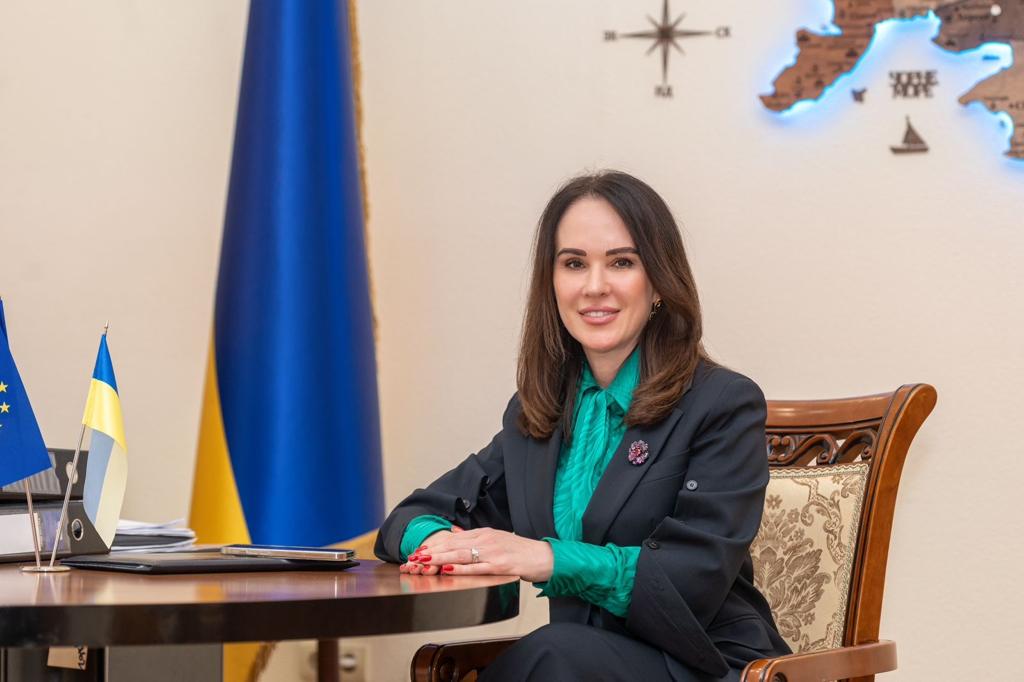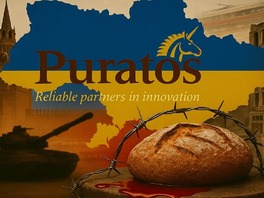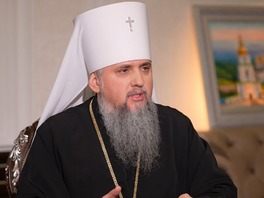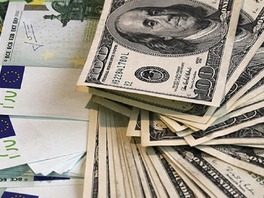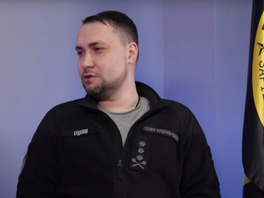The EU ambassadors in Brussels agreed on the idea of using surplus profits, which bring frozen Russian assets. For this, a separate financial account will be created, which will receive interest from Russian deposits. Now the next step is to agree on the mechanism of transferring them to the disposal of Ukraine. It is possible that this issue will be discussed at the EU summit, which will take place on February 1 in Brussels. The main topic of this summit is solving the issue of financial assistance to Ukraine. In an interview with Apostrophe, Deputy Minister of Justice IRYNA MUDRA spoke about the development of legal mechanisms for seizing Russian property both in Ukraine itself and outside its borders.
How to get 300 billion
- Russian assets have already become almost as much an element of folklore as Hetman Polubotok's gold: they are talked about a lot, but it is impossible to get them. In what form do these assets exist?
- When they talk about 300 billion dollars of frozen Russian assets, they mean the so-called sovereign assets - property that belongs directly to the Russian state. These are mainly the gold and currency reserves of the Russian Central Bank, which it kept in bank accounts in other countries.
- That is, these are the so-called highly liquid assets, which, once received, can be easily and quickly turned into money?
- So. These are low-hanging fruits (literally - "low-hanging fruits", that is, what is easy to get - "Apostrophe"). Such assets, after their withdrawal, can be quickly directed to the needs of Ukraine. And our main focus today is to get access to them.
But we do not limit our claims to this. Our goal is to acquire all assets that Russia owns abroad, including the property of Russian state-owned companies. And it can be anything: money, real or movable property, corporate rights, objects of art, etc.
- And where are the Russian assets?
- These are mainly the countries of the "big seven" and the European Union. It turned out that the largest part - about 189 billion euros - is stored in the Euroclear company in the form of securities (Euroclear - a Belgian company that specializes in safekeeping and safe transactions with securities, is part of the American financial corporation JP Morgan & Co - "Apostrophe "). Between 5 and 8 billion dollars are in the United States. Significant amounts are also in Germany, France and other EU countries.
And I believe that not all existing assets have been identified at this point. In fact, the total is much higher than $300 billion. If relevant laws are passed at the international level, which will oblige countries to disclose information about Russian property, there will be other values.
- Nevertheless, although these are very liquid assets, they are still not here. Talks about their removal have been going on for almost two years - since the moment they were frozen. And many people in Ukraine wonder why the case is taking so long. From many people's point of view, everything looks very simple: take it and give it to us. You can do it in one day.
- This question is definitely not about "take it away and give it to us". Every legal state has legislation that guarantees ownership. And no one is going to violate this legislation (which is why the money of dictators and corrupt people from all over the world goes to Europe and America, where they are protected by law and independent courts - "Apostrophe"). Under normal circumstances, no one has the right to confiscate sovereign assets. They are under the protection of international laws. In order to withdraw these funds, a long, well-developed legal procedure is required.
Our position on this issue is that Russia has legal obligations to Ukraine to compensate for the damage caused. This obligation arose at a time when Russia, violating the norms of international law and the UN charter, attacked Ukraine and committed countless war crimes, causing damage in the amount of hundreds of billions of dollars. The duty of the aggressor is to compensate the injured party for the damage caused.
And now the international community must develop mechanisms for such compensation. If Russia does not agree to do this voluntarily, it will be necessary to enforce that. After all, the obligation not only to Ukraine, but also to the whole world was violated. Confiscation of Russia's sovereign assets is considered as one of the measures within the framework of such compensation. It is important that this decision is not taken by a single country, but at the global level. And if suddenly in the future Russia agrees to voluntarily pay reparations...
- A fantastic plot...
- But we have to take it into account. And if this happens, the seized funds will be included in the total amount of reparations. Therefore, the current transfer of these assets to Ukraine can be considered as an advance payment to the compensation fund. In fact, in this way the world community will fulfill for Russia its duty, which it so far refuses to fulfill itself.
However, such a decision cannot be made by one country. It should be adopted at the global level.
- The problem is that the global level is represented by the UN Security Council, and it is quite obvious that this body is unable to make the necessary decisions, since Russia is a permanent member of the Security Council with the right of veto.
- So. Last year alone, the question about Ukraine was raised 35 times in the Security Council, and 35 times Russia blocked any decisions. Therefore, this possibility is closed for us.
However, there are a number of other organizations with which we actively work - the "big seven", the Council of Europe, the European Union, various regional organizations, etc. The decision must be made on all possible political platforms, which will ensure maximum legitimacy.
In addition, I would like to remind you that there is a resolution of the UN General Assembly dated November 14, 2022 - 94 countries stated that Russia is obliged to compensate Ukraine for the damage caused. And for this, UN member states are recommended to create an international damage register. So after the resolution was passed, we immediately started working, and in less than eight months such a register was created.
- What is this register and why is it needed?
- It is the first element of the compensation mechanism. All the damages caused to Ukraine by Russia are recorded there. Individuals and legal entities, as well as the state of Ukraine in the person of its central and local authorities, have the right to submit claims for damages and relevant evidence to the register.
- What losses will be recorded in the register? Only material?
- No. All types of damage caused by the aggressor to Ukraine and its population will be included there. These are damages related to loss of life, bodily injury, torture, sexual violence, forced resettlement, forced displacement, loss of property and income. Damage caused to infrastructure facilities, government facilities, cultural and artistic heritage, environment, etc. will also be recorded. The final list of damage categories will be approved by the Register Board.
- Does it already exist?
- Yes, at the recent conference, a Council of seven people was elected, one of whom was proposed by Ukraine (Yulia Kyrpa, lawyer, specialist in banking and financial law. In addition to her, the Council of the register included representatives of Germany, Italy, Iceland, Finland, the USA and Poland - "Apostrophe").
Experience of predecessors
- So let's assume that we have collected comprehensive information about the damage caused in the register. How will this help us get paid?
- The legal mechanism, which is currently being developed, provides for the creation of a special compensation commission, which will study the data from the register and, based on it, determine the amount of compensation to be paid to Russia.
- And where will it be necessary to apply for these decisions?
- Of course, when it comes to compensations, it is necessary not only to determine their amount, but also to find a source of funds for their payment. Otherwise, all register data and compensation commission decisions will remain worthless documents. That is precisely why we propose to create a fund for the payment of compensations. And the first contribution to this fund should be the frozen Russian assets.
- Has such a legal mechanism ever been used? Will our case be the first in history?
- There has never been such a situation before, so we have to solve many issues for the first time. However, to a certain extent, there have already been similar cases, and we rely on this experience when developing new legal mechanisms.
Among the closest historical examples are the compensations paid by Iraq to Kuwait (in August 1990, Iraqi troops invaded Kuwait and captured the entire country in two days. In January-February 1991, the international coalition carried out Operation Desert Storm, as a result of which Kuwait was released - "Apostrophe"). At that time, a compensation commission and a fund were also created to pay compensation to the victims. A certain part of the income from the export of Iraqi oil was credited to this fund.
- Did Iraq agree to this?
- Agreed. But in a voluntary-compulsory manner. This is the main difference from our situation. We do not see Russia's goodwill in compensating for the damages it has caused. And it is unlikely to be expected in the near future. That is why we propose to forcibly transfer Russian sovereign assets to the compensation fund.
Another difference is that the Iraqi-Kuwait compensation mechanism was created on the basis of a decision of the UN Security Council. Unfortunately, we do not have to count on such a decision.
There are other precedents that are somewhat similar to our case. For example, the compensation mechanism created by the United States and Iran in 1981 (after Iran seized the employees of the US embassy and froze Iranian assets in response - "Apostrophe"). Then Iran agreed to independently fill the compensation fund for the victims, and the US unblocked its assets.
What belongs to whom
- Now let's move on to Russian assets in Ukraine. They are gradually being confiscated, and it seems that it is easier to do this in Ukraine than in the USA or Europe. What legal procedures apply?
- Such confiscations take place on the basis of sanctions against specific individuals, which in particular provide for the blocking of their shares in legal entities operating on the territory of Ukraine. The decision to apply sanctions is made by the National Security and Defense Council, and the president puts them into effect. Then the Ministry of Justice applies to the High Anti-Corruption Court (HCC) with a claim to confiscate the assets of the sanctioned persons. And the court is already making a decision on the confiscation of property.
- How many assets were confiscated?
- To date, 38 lawsuits have been submitted to the court, and in 32 cases a decision has already been made regarding the confiscation of assets. Dozens of companies, hundreds of real estate objects, and thousands of pieces of movable property became the property of the state. About 130 million hryvnias were also collected in cash.
The case of Russian oligarchs Voevodin, Giner and Babakov is currently under consideration. From the materials available at the Ministry of Justice, it can be concluded that they indirectly exercise control over the company VS Energy, which controls several regional energy companies, objects of the hotel business, real estate, and also has shares in many companies.
- Russian oligarchs (as well as Ukrainian) are great masters at creating such a structure of ownership, when it is very difficult to understand what belongs to whom. The latest example is "Kyivstar", whose shares belong to a European company in which, in addition to Russians, there are also other investors. How to remove the share of sanctioned persons without affecting the interests of Western co-owners?
- The law does not give a simple answer to this question. We have to do a lot of work in order to lift the "corporate veil", to understand exactly what share in a certain object belongs to sanctioned persons. We turn for information not only to the Ukrainian special services, but also to our foreign partners in the field of international legal assistance.
We often hear comments that the Ministry of Justice drags with confiscation. But it takes a lot of time and work to gather comprehensive evidence that a certain property is connected specifically to the Russians. It is very important to observe the rule of law and ensure the protection of the rights of non-authorized shareholders. Because every oligarch whose property was confiscated has the opportunity to appeal to an international court, and we will have to defend our position there.
- Ukraine has already at least once defended its own interests in foreign courts, achieving the return of the Scythian gold collection. How did it work?
- In 2014, this collection was leased to the Allard Pearson Museum (archaeological museum in Amsterdam - "Apostrophe"). And after the annexation of Crimea, Russia claimed it on the grounds that the exhibits belong to museums from the occupied Crimea. Our position was that these treasures are the national property of Ukraine.
Court proceedings lasted for years. Finally, in 2021, the Court of Appeal of the Netherlands established that the collection belongs to Ukraine. And last year, the Supreme Court of the Netherlands put an end to the case, which made a final decision on the return of historical values to the rightful owner. However, according to this decision, Ukraine had to reimburse the museum for the costs of storing the collection for nine years.
- Is it a large amount?
- About 130 thousand euros. However, thanks to the joint work of the Ukrainian government, the Embassy of Ukraine in the Netherlands, and the Museum of the History of Ukraine, we managed to agree not to pay this money. So this struggle ended with our convincing victory.

